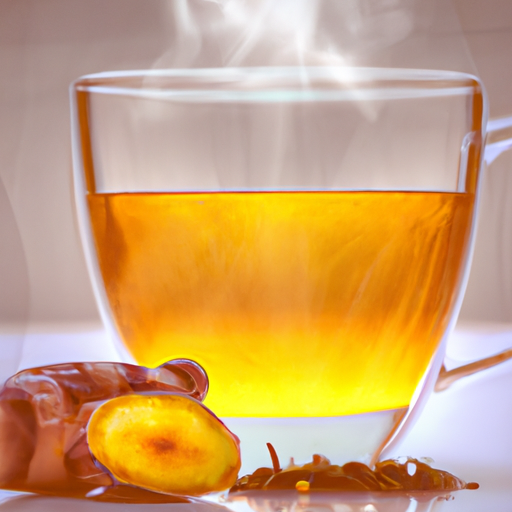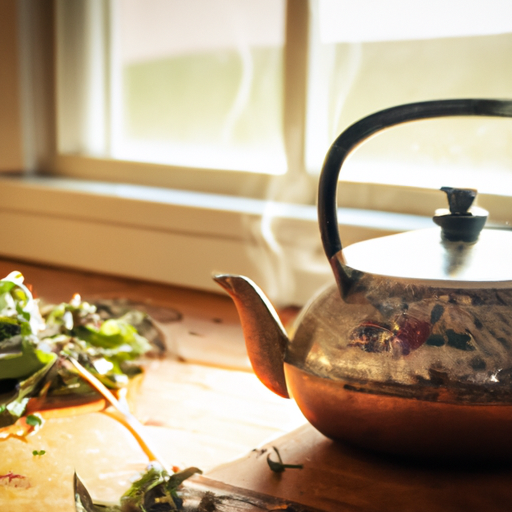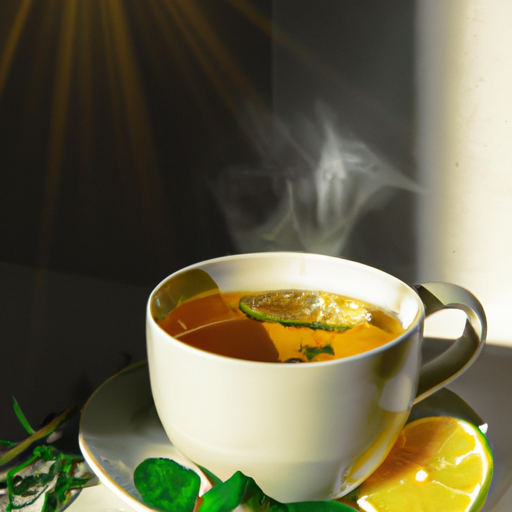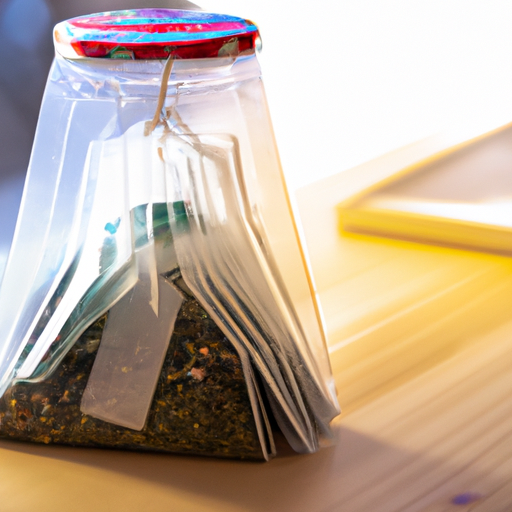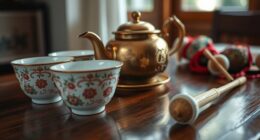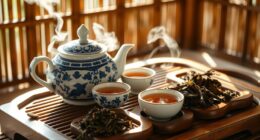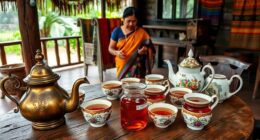Have you ever wandered through a forest, marveling at the different plants and their healing properties? Just like nature’s bounty, herbal teas offer a multitude of benefits for our well-being. But, have you ever stopped to consider how these teas are labeled? It’s like navigating through a dense forest without a map. Fear not, fellow tea enthusiasts! I am here to guide you on your labeling journey.
Properly labeling your herbal tea products is essential for consumer safety and compliance with regulations. In this article, I will share my knowledge on the subject, providing you with the tools to ensure your labels are informative, accurate, and appealing.
We will explore the labyrinth of labeling regulations, uncovering the essential information that must be included on your labels. From allergen warnings to dietary needs, we will leave no stone unturned. Discover the importance of clear and accurate product descriptions, and learn the secrets to proper label placement and legibility.
So, grab your cup of tea, and let’s embark on this labeling adventure together. By the end, you will be equipped with the knowledge to label your herbal tea products with confidence and finesse. Let’s dive in!
Key Takeaways
- Properly labeling herbal tea products is essential for consumer safety and compliance with regulations.
- Key components to include on herbal tea labels are the product name, ingredient description, allergen information, net weight, and company contact information.
- Considerations for labeling herbal tea products include allergen warnings, special dietary needs, organic, vegan, and fair trade certifications.
- Clear and accurate product descriptions and brewing instructions are important for customer understanding and satisfaction.
Understand Labeling Regulations for Herbal Tea Products
Now, let’s dive into the exciting world of labeling regulations for your herbal tea products so you can confidently showcase your delicious blends to the world! Understanding the regulations is crucial to ensure that your labels comply with the necessary requirements.
Firstly, make sure to include the name of your herbal tea product on the label, along with a brief description of the ingredients used. It’s important to accurately list all the ingredients in descending order by weight.
Additionally, include any allergen information, such as whether the product contains nuts or gluten. Furthermore, the net weight or volume of the product should be clearly stated.
Lastly, don’t forget to include your company’s contact information for consumers to reach out with any questions or concerns. By following these labeling regulations, you can create labels that provide essential information to your customers.
Now, let’s move on to the next section about including essential information on your labels.
Include Essential Information on Your Labels
Ensure that all the necessary details are clearly displayed on your labels, painting a vivid picture in the minds of your customers. By providing essential information on your labels, you enhance the transparency and trustworthiness of your herbal tea products. This information includes the name of the tea, the ingredients used, the net weight, and the brewing instructions. To make your labels more visually appealing, you can also include captivating images or designs related to your herbal tea.
To help you visualize the essential information that should be included on your labels, here is a table:
| Label Information | Description |
|---|---|
| Tea Name | The name of your herbal tea product |
| Ingredients | A list of all the ingredients used in the tea |
| Net Weight | The weight of the tea in the packaging |
| Brewing Instructions | Step-by-step instructions for brewing the tea |
| Images/Designs | Visual elements that enhance the appeal of the label |
By incorporating these details on your labels, you provide customers with all the necessary information to make informed purchasing decisions. Next, we will consider allergen warnings and special dietary needs.
Consider Allergen Warnings and Special Dietary Needs
When it comes to labeling herbal tea products, it’s important to consider allergen warnings and special dietary needs.
This includes providing clear and accurate information about common allergens such as gluten and nuts.
Additionally, it’s beneficial to indicate if the tea is organic, vegan, or fair trade. This information can be crucial for consumers with specific dietary preferences or ethical considerations.
By including these details on the labels, we ensure that customers are well-informed and can make informed choices about the products they purchase.
Labeling for Common Allergens (e.g., gluten, nuts)
Additionally, it’s important to properly label herbal tea products to include information about common allergens like gluten and nuts. This is crucial for the safety and well-being of customers with specific dietary needs or allergies.
Labeling requirements vary by country, but generally, it is necessary to clearly state if the product contains gluten or nuts. This information allows individuals to make informed decisions about the products they consume. Moreover, it’s essential to use clear and legible fonts to ensure that the allergen warning is easily visible.
By providing this information, herbal tea companies demonstrate their commitment to customer satisfaction and safety. Moving forward, the next important aspect to consider is indicating if the tea is organic, vegan, or fair trade.
Indicate if the Tea is Organic, Vegan, or Fair Trade
To make sure you can trust the quality and ethical sourcing of your tea, look for clear indicators if it’s organic, vegan, or fair trade. These labels provide important information about the production and sourcing practices of the tea you’re consuming.
For example, organic certification ensures that the tea is grown without the use of synthetic chemicals or pesticides, promoting a healthier and more sustainable product. Vegan labeling guarantees that no animal products or by-products were used in the production process, catering to those following a plant-based lifestyle. Fair trade certification ensures that the tea was produced in a way that supports fair wages and working conditions for farmers and promotes sustainable farming practices.
By looking for these labels, you can make informed choices and support brands that align with your values.
Moving on to the next section, it’s also important to use clear and accurate product descriptions to further inform consumers about the tea.
Use Clear and Accurate Product Descriptions
One key aspect of effectively labeling your herbal tea products is using clear and accurate descriptions that captivate your customers. To ensure your product stands out and entices potential buyers, follow these guidelines:
-
Be specific: Use descriptive language to highlight the unique qualities and flavors of your herbal tea. Mention the ingredients, aroma, and any health benefits associated with the blend.
-
Avoid vague terms: Steer clear of generic phrases like ‘delicious’ or ‘high-quality.’ Instead, provide specific details about the taste profile and sourcing methods used.
-
Include brewing instructions: Inform your customers about the ideal water temperature, steeping time, and any additional steps required for the best cup of tea.
By utilizing clear and accurate product descriptions, you can effectively communicate the value of your herbal tea to consumers. This sets the stage for the subsequent section on ensuring proper label placement and legibility.
Ensure Proper Label Placement and Legibility
Make sure your customers can easily read and locate the labels on your delightful herbal tea blends. Proper label placement and legibility are crucial in ensuring that your customers have a seamless experience with your products. When designing your labels, consider the size, font, and color of the text to ensure maximum legibility.
Additionally, make sure that the labels are securely attached to the tea packages and are placed in a prominent location for easy visibility. Clear label placement not only enhances the aesthetic appeal of your products but also makes it convenient for customers to identify the tea blends they desire.
In the subsequent section about including contact information and branding, it’s essential to incorporate these elements seamlessly into your labels, further enhancing the professional appearance of your herbal tea products.
Include Contact Information and Branding
Ensure that your customers can effortlessly reach you and recognize your brand by incorporating your contact information and unique branding elements into your tea labels. This is crucial for building trust and establishing a strong connection with your target audience. Here are four key elements to include on your labels:
-
Contact Information: Clearly display your phone number, email address, and website. This allows customers to easily reach out to you with any questions, concerns, or feedback.
-
Social Media Handles: Include your social media handles to encourage customers to connect with you on platforms like Instagram, Facebook, or Twitter. This helps create a sense of community and allows you to engage with your customers on a more personal level.
-
Logo and Branding Elements: Incorporate your logo and other branding elements, such as colors, fonts, and taglines. This helps customers quickly recognize your brand and differentiate your products from competitors.
-
QR Code: Consider adding a QR code that links to your website or social media. This provides a convenient way for customers to access additional information about your products and brand.
By including these elements on your tea labels, you can enhance your brand visibility and make it easier for customers to connect with you.
Transitioning into the next section, it’s also important to stay updated on labeling regulations and changes to ensure compliance and avoid any potential issues in the future.
Stay Updated on Labeling Regulations and Changes
Staying informed about labeling regulations and changes is essential for ensuring compliance and avoiding any potential issues in the future. As an herbal tea producer, it is crucial to stay updated on the latest requirements set by regulatory bodies such as the Food and Drug Administration (FDA). This ensures that your herbal tea products are properly labeled and contain accurate information for consumers.
To help you stay on top of labeling regulations, here is a table summarizing some key points to consider:
| Regulation | Description |
|---|---|
| Ingredient List | Include a list of all ingredients used in the herbal tea. |
| Net Weight | Clearly state the net weight of the product. |
| Allergen Warning | Highlight any potential allergens present in the herbal tea. |
| Health Claims | Avoid making unsubstantiated health claims on the labels. |
| Nutritional Info | Provide accurate nutritional information per serving. |
By staying updated on labeling regulations and making necessary adjustments to your herbal tea product labels, you can ensure compliance, build trust with consumers, and maintain a successful business. Remember to regularly check for any changes in regulations to stay ahead of the game.
Frequently Asked Questions
Can I use images or graphics on my herbal tea product labels?
Yes, you can use images or graphics on your herbal tea product labels. However, it’s important to ensure they are relevant, clear, and comply with any regulations. Consider consulting labeling guidelines or seeking professional advice to ensure compliance.
How can I determine the appropriate font size for the required information on the label?
To determine the appropriate font size for required information on herbal tea labels, consult the FDA’s labeling regulations. The font size must be "at least 1/16 inch in height" to ensure readability and compliance.
Are there any specific requirements for labeling organic herbal tea products?
Yes, there are specific requirements for labeling organic herbal tea products. The USDA regulates the labeling of organic products, including herbal teas. These requirements ensure that consumers have accurate information about the product’s organic status.
Should I include specific instructions on how to brew the tea on the label?
Yes, including specific brewing instructions on the label is essential. It helps customers achieve the best flavor and benefits from the tea. Plus, it adds a personal touch, making them feel confident in their brewing skills.
Are there any restrictions on using health claims or benefits on herbal tea labels?
There are restrictions on using health claims or benefits on herbal tea labels. These claims must be supported by scientific evidence and cannot be misleading. It is important to comply with FDA regulations when labeling your products.
Conclusion
In conclusion, properly labeling your herbal tea products is essential for ensuring consumer safety and satisfaction. By following labeling regulations and including essential information, you can provide a clear and accurate representation of your product. It is also important to consider allergen warnings and special dietary needs. Remember to place labels properly and ensure legibility for easy identification. Including contact information and branding will help establish your brand identity. Lastly, staying updated on labeling regulations and changes will ensure compliance and maintain the quality of your herbal tea products. Just as a label covers and protects a tea bag, proper labeling safeguards the integrity of your product.


